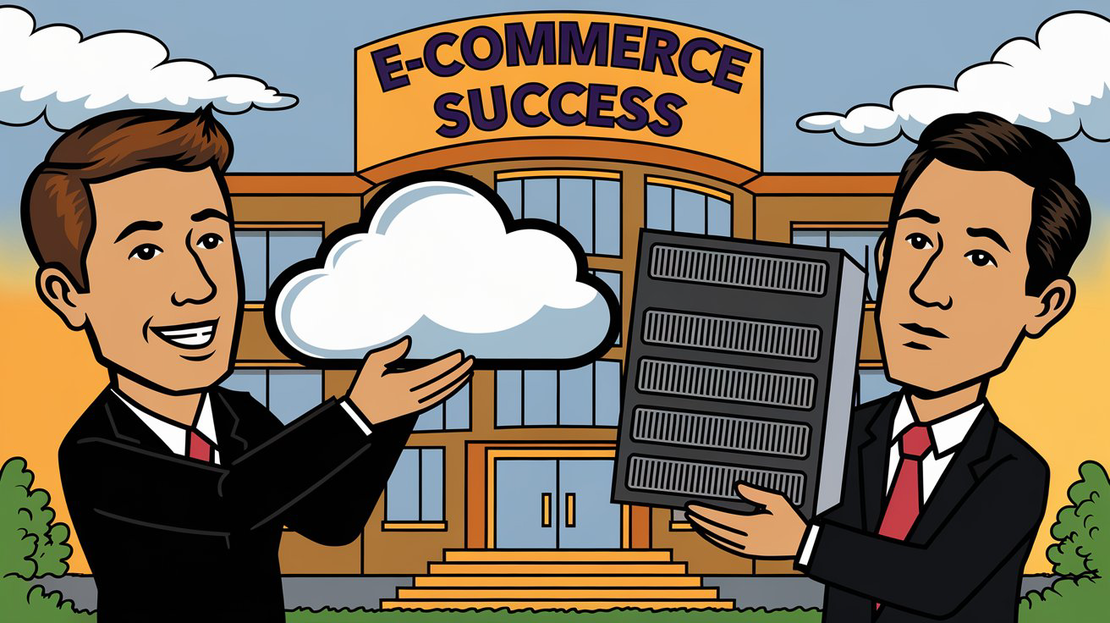
Revolutionize Your Online Store: E-commerce Design Ideas for Sales!
- Marta Kaczor
- Design , Ecommerce , Ux , Ui
- December 1, 2024
Table of Contents
Discover groundbreaking design concepts for your online store that can significantly enhance user experience and drive sales. This article explores various strategies, from minimalistic layouts to eye-catching product displays, tailored to captivate your target audience. Learn how color schemes, typography, and intuitive navigation can create a seamless shopping journey. Also, we’ll share practical examples of successful e-commerce sites and how their design choices led to increased conversion rates. Don’t miss out on these design insights that can elevate your brand!
The Crucial Role of User Experience in E-Commerce
In the fast-paced world of e-commerce, user experience can truly make or break a business.
Research indicates that just a one-second delay in page loading can lead to an impressive 4.42% drop in conversion rates. For a store pulling in $100,000 a month, that could mean losing nearly $53,000 each year simply due to slow performance.
Additionally, how a website looks plays a crucial role in building trust. Around 75% of users judge a brand’s credibility based on its design. A clean and engaging layout can boost user confidence and encourage exploration. For example, a well-designed product page with:
- High-quality images
- Intuitive navigation
can significantly enhance customer engagement.
In a competitive landscape, investing in user experience isn’t just a good idea; it’s essential for long-term growth.
Design Elements that Transform User Experience
Creating a seamless user experience relies on design elements that truly connect with customers.
Minimalistic layouts can boost user engagement by an impressive 60%. By removing unnecessary clutter, you enable visitors to focus on important products and messages. For example, a tidy homepage that showcases featured items without overwhelming distractions encourages users to explore further, ultimately driving sales.
A consistent color scheme is another key factor, with the potential to increase brand recognition by up to 80%. When colors align with your brand identity, they create a cohesive experience that fosters familiarity. Think of iconic brands like Coca-Cola or Apple; their color palettes are instantly recognizable and evoke specific emotions tied to their products.
Effective typography is crucial as well, enhancing readability and comprehension by 50%. Choosing the right font style and size ensures that your message is not only visible but easily understood. A well-designed product description with clear typography can significantly reduce the effort users need to gather information, encouraging longer visits.
Lastly, intuitive navigation can lower bounce rates by 30%. When users can easily find what they’re looking for, they’re more likely to stay and engage. Consider the impact of a well-organized menu that logically categorizes products; this simple approach can transform the shopping experience from frustrating to enjoyable, leading to higher retention rates.
Each of these elements works together to create a user experience that can elevate a brand’s presence in the e-commerce world.
Case Studies in E-Commerce Design Success
Examining successful e-commerce design strategies offers valuable insights for online retailers.
Zalando, a top fashion platform, revamped its checkout process to be more streamlined and user-friendly. This change resulted in an impressive 20% boost in conversions. By minimizing obstacles during checkout, customers are less likely to abandon their carts, which directly leads to higher sales. For businesses, this highlights how essential a smooth purchasing journey is for maximizing revenue.
ASOS, on the other hand, redesigned their mobile interface, which led to a 15% increase in customer satisfaction. This improvement not only enhanced the overall shopping experience but also built customer loyalty. In our mobile-driven world, ensuring your site is optimized for mobile users is crucial. A responsive design that prioritizes user needs can significantly boost a brand’s reputation and encourage repeat visits.
Even smaller brands can take advantage of these insights. For example:
- A boutique that simplifies its navigation can see a noticeable increase in user engagement.
- When users can easily find what they need, they’re more likely to explore additional products, leading to higher sales and customer retention.
By studying these case studies, e-commerce executives can discover effective strategies to adopt on their own platforms. Focusing on design elements that enhance user experience can yield significant improvements in both customer satisfaction and conversions.
Summary
In the ever-evolving e-commerce landscape, prioritizing user experience has emerged as a fundamental driver of success. The article highlights the staggering impact of seemingly small design elements—like page load speed and visual aesthetics—on conversion rates and customer trust. One key insight is the substantial revenue loss attributed to delays in loading times, emphasizing the need for optimal performance. Moreover, a minimalist design fosters engagement, allowing users to focus on essential products without distractions.
The article also underscores the importance of brand consistency through color schemes and typography, which not only enhance recognition but also improve readability. Intuitive navigation is crucial for reducing bounce rates, as it directly influences user retention. Case studies from industry leaders like Zalando and ASOS demonstrate the tangible benefits of streamlined processes and mobile optimization. Reflecting on these strategies prompts us to consider: Are our design choices truly aligned with enhancing user engagement and satisfaction? What opportunities exist for us to refine our platforms for better performance and increased conversions?
Sources used in the article
- https://www.drip.com/blog/ecommerce-ux-design
- https://www.forbes.com/sites/kateharrison/2018/12/21/6-ways-to-improve-your-website-design-to-boost-sales/


